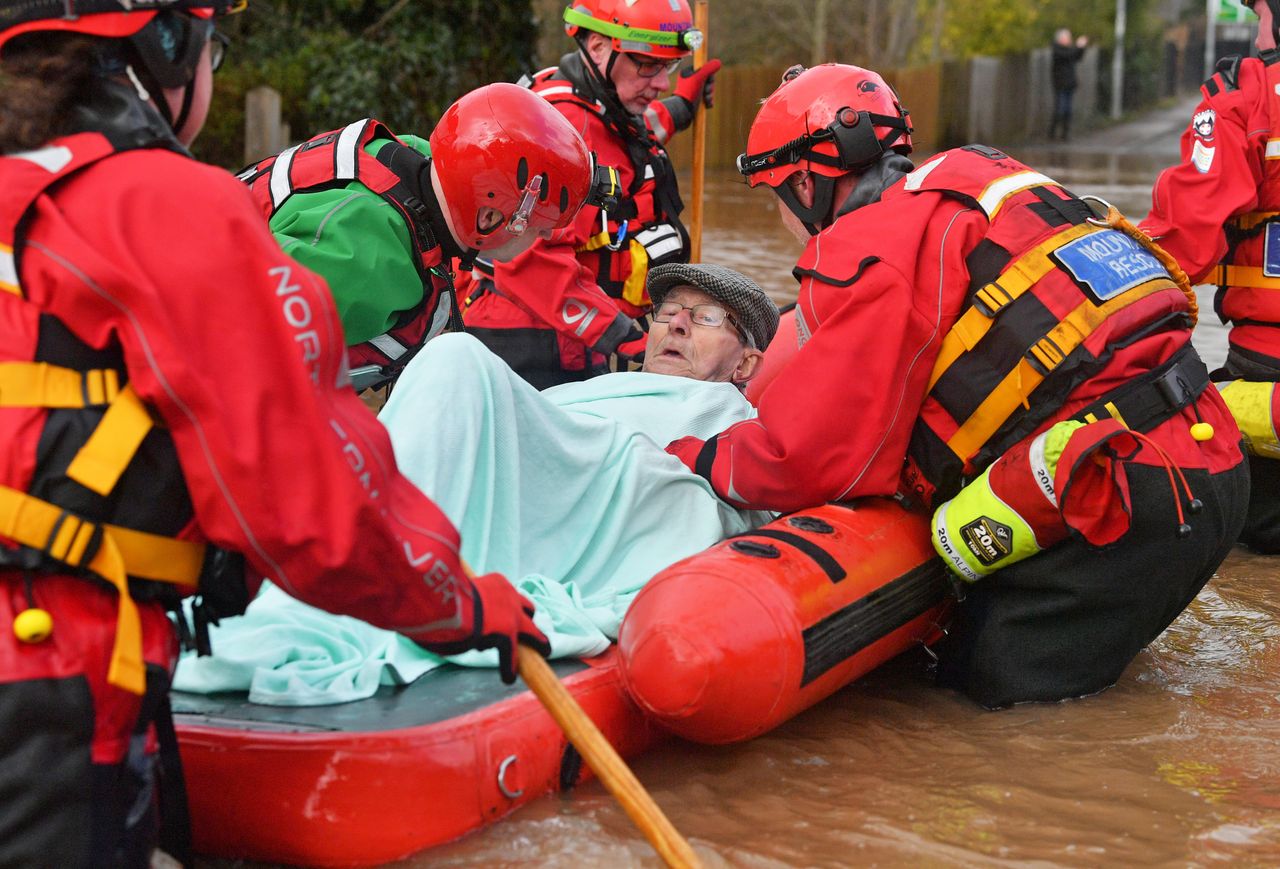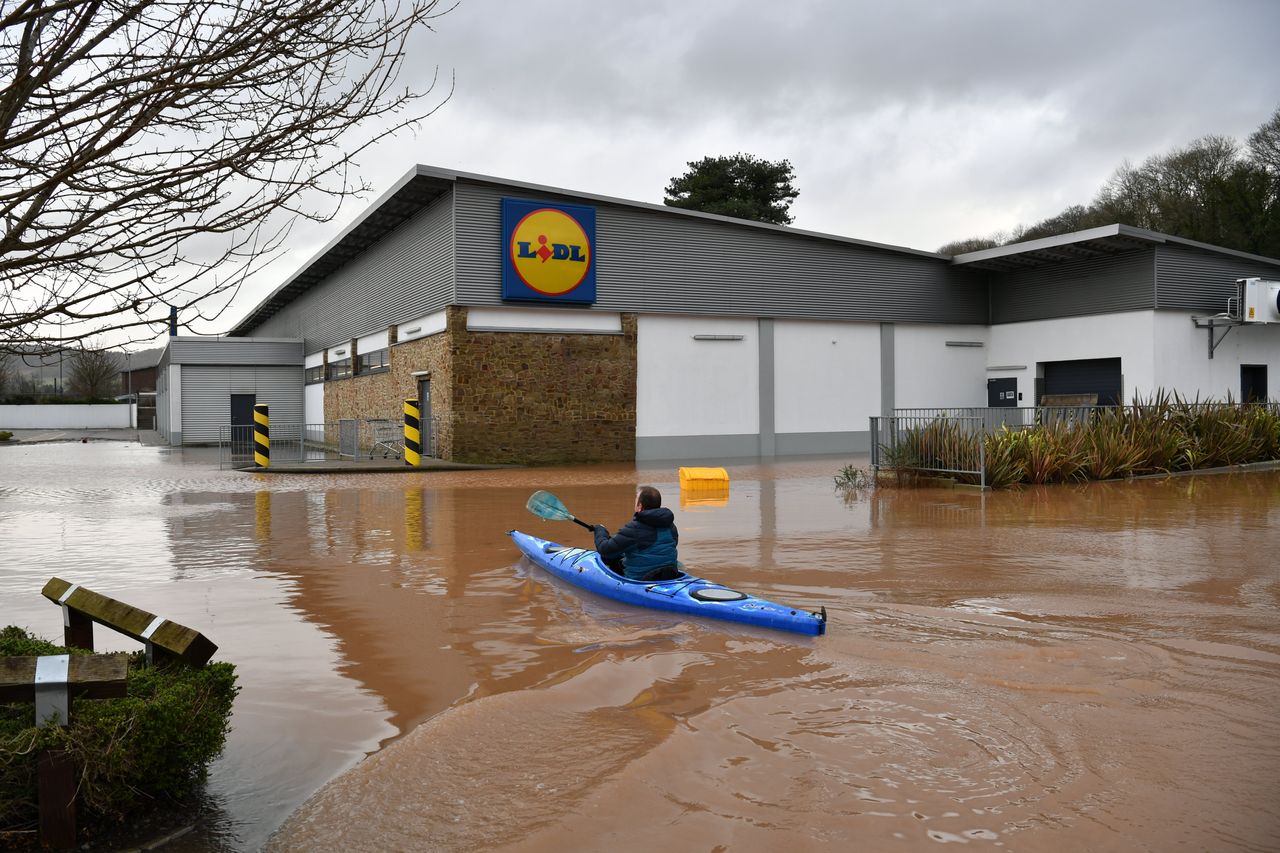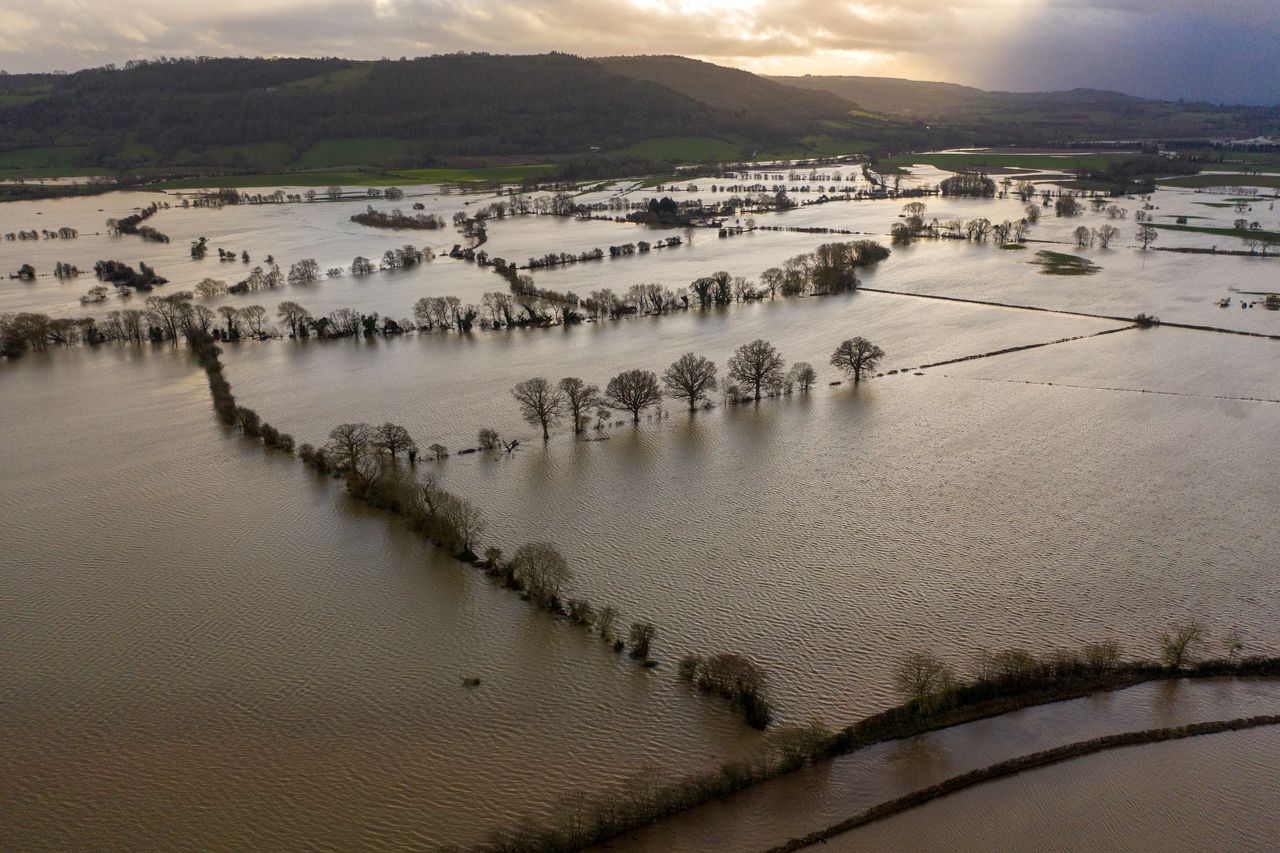“The number of big storms we get, one after another after another, is predicted to increase with climate change – and we think that this is what we’re seeing right now,” says Professor Daniel Parsons, director of the Energy and Environment Institute.
“It’s the same with the fires in Australia. These are the sorts of predictions we have been saying over the past 20 years and we’re seeing them manifest right now in front of our eyes in many ways.”
The past two weeks has seen the UK battered by bad weather, with Storm Ciara – dubbed “the biggest storm this century” by the Met Office – and Storm Dennis bringing high winds and punishing rains.
Rising river levels over the weekend saw hundreds of properties flooded, people having to be rescued from their homes by firefighters and a record number of flood warnings and alerts issued by the Environment Agency.
As parts of the UK try to recover from record levels of flooding – and prepare for more heavy rain forecast for later in the week – people are asking themselves the obvious question: are storms like these down to climate change?

For Parsons, a professor of sedimentology at the University of Hull, it would certainly seem to be the case.
“The impacts of climate change are being seen right now in terms of these sorts of storms,” he said, adding that it is “absolutely is the case” that we’re seeing more flooding – and that it’s likely to get worse.
Even if countries uphold the Paris Agreement and the globe only warms by 1.5C this century, “we’re going to see an increasing risk of flooding and an increasing occurrence of both the magnitude and the frequency of the sort of storms we have seen over the past few days”, Parsons added.
Dr Dann Mitchell, an associate professor in atmospheric science at Bristol University, agrees that the UK will see more “strong rain events” as climate change hits.
“We know that a warmer atmosphere can hold more moisture, and so there is more moisture to rain out,” he said.

“We wouldn’t necessarily expect more storms under climate change, but we do expect that the storms that hit the UK will be carrying more water, and can cause more strong rain events, especially in the winter.”
It’s hard to say now whether Storms Ciara and Dennis are down to climate change, he said, with studies – like the one carried out on the 2013/14 floods – taking time to reach conclusions.
Meanwhile, “large-scale flooding is all too frequent in the UK, and certain years have seen many more houses flooded than we’ve seen from either Ciara or Dennis, for instance 2000, 2007, and 2015”, Mitchell said.
But “we can be confident that the impacts of storms like these will get worse in the future”.
So, what can – and should – the UK do to protect itself from flooding in the future? In a word, adapt, experts say.
“The coincidence of two strong storms hitting the UK in short succession has overwhelmed some defences,” said Dr Carola Koenig, flood and coastal engineering course director at Brunel University.
But simply improving flood defences will not be enough to become more resilient for “what lies ahead”, she added.
“We have all seen images of mountains of carpet and furniture being removed from flooded houses or cars being swept away although we knew the storms were coming.

“Anticipating the worst and being prepared needs to be the new mind-set for us all rather than hoping that flood defences will hold. Anticipating the worst needs to feed into our building standards, planning policy, insurance strategy, education and more.”
It’s a view echoed by Parsons. “There’s no way we’re going to win a fight against water,” he said.
“We’re going to have to learn, as a society, how to get wet better. We can’t just continue to build walls higher and higher and higher because people don’t want to live behind walls, first and foremost.”
We need to accept that some areas of the country are going to flood, he added. “That’s a change in mindset for society and it’s a big behavioural change for the way we live.”
Society must also become more resilient in a practical sense. “Houses in flood-prone areas need to be designed to flood so that these communities can respond to being flooded and can be up and running the next day.
“We can only reduce the risk of flooding – we can’t build walls infinitely higher around our rivers and around our coastlines. That’s not going to work.”
